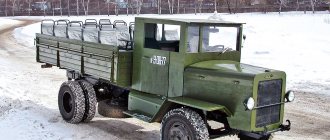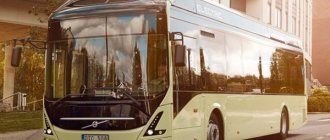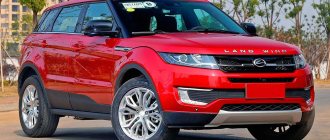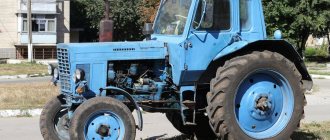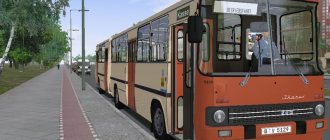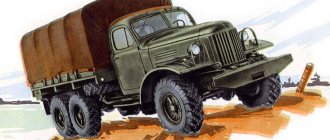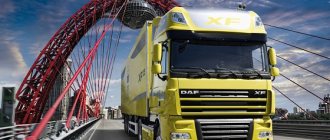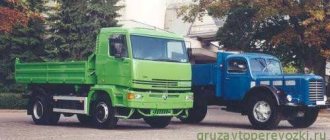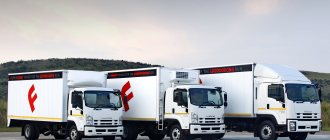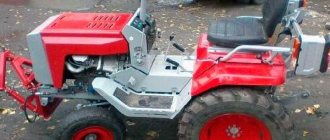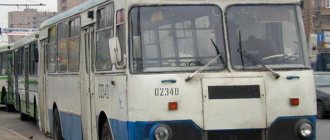V. Stepanov
75 years ago, the Dutch mechanic Hub van Doorn organized a small mechanical workshop in Eindhoven, from which the history of the now famous DAF brand begins. The development of the business was helped by the owner of a local brewery, Mr. Arnold Hunges, who believed in Hub’s engineering and organizational talent. For a new, more spacious workshop, he provided the newly built brewery building in 1928 and became Hub's business partner. For many years, Hub helped Huynges equip the brewery with original equipment and renovate it, so the wealthy sponsor had no doubts about the success of the new business.
Hub's younger brother Vim, who later became a good economist, also began working in the new workshop. The success of the young enterprise allowed two years later to move to a larger premises, where they began to repair and manufacture trailers for trucks. In 1932, the company's owners decided to call it Van Doorn's Aanhangwagen Fabriek, or DAF for short.
Gradually, from the production of various kinds of trailers, semi-trailers and specialized bodies mounted on truck chassis, steps were taken towards independent design and production of original trucks.
no_copyright_DAF_66_Marathon_Coupé_1975.jpg_
The Netherlands, as it may seem to many, has never been known for its passenger car brand. But speaking about the absence of its own passenger car brand in this small European country, it should be clarified - only at the present time. After all, the DAF concern several decades ago was famous not only for its trucks, but also produced a number of interesting models of passenger cars.
The Dutch passenger car industry began with DAF, ended with DAF and was reborn with it. Founded as a machine shop in 1928 by De Valk Brewery manager Arnold H. Hugens, the company initially repaired carts and machinery. Then the Van Dorn brothers got involved. It was under them that the company received the name DAF (Van Doorne's Aanhangwagen Fabriek) and a little later, in 1936, it became their family business. Initially, its products were trailers and semi-trailers. After the Second World War, the company was able to use the shortage of commercial vehicles to build on its success and produced the first DAF A30 truck in 1949.
no_copyright_DAF A30
The first DAF passenger car
The development of truck production allowed the company to think about entering the passenger car market. In the winter of 1954, Hubert van Doorn came up with the idea of using a belt drive in cars, similar to that used on machine tools. In 1955, DAF showed its first project for a belt-driven transmission. Over the next three years, the project was refined and improved, and in February 1958, at the Dutch AutoRAI show, the company demonstrated a small - only 630 kg - four-seater car with a belt-driven continuously variable transmission, a 590 cc flat-twin engine. cm, front suspension with McPherson struts and transverse leaf spring and rear independent - with levers and springs.
Design
Visually there were differences, but they were small. Two cab options are available. The front view is highlighted by the black-painted radiator grille, which features a chrome line and nameplates.
The narrow, almost oval optics of the DAF HF 105 do not seem powerful, but in fact the light beam provides excellent visibility; occasionally you will even have to turn on the distant one. There are 4 round fog lights on the small bumper.
If the front still stands out with oval shapes and interesting overlays, then the side is straighter without excess. Two deeply recessed steps will help with landing. The wheel arches are represented by a thick plastic insert. A wide range of wheelbases are available:
- 4 x 2;
- 6 x 2;
- 6 x 4;
- 8 x 4.
4 x 2 long-haul tractors are more common on the Russian market. Over the years of production, the model was once subjected to serious restyling, which added the same fog lights to the exterior, a large sun visor above the windshield, and modified optics, making petal-shaped headlights.
Thus, the modern Dutch tractor DAF XF 105 looks very attractive; many did not expect that trucks could look so beautiful.
no_copyright_Daf600_
The public reaction to the new product was very positive. DAF received orders for 4,000 vehicles, and in 1959 the company began selling the world's first car with a continuously variable transmission, the small four-seater DAF 600. It became the first of a series of models that would be released in subsequent years, including the DAF 33, DAF 44, DAF 55 and DAF 66. All of them were equipped with the innovative Variomatic continuously variable transmission.
At that time, DAF was the only car on the market with such a drive system that had the smooth ride and dynamics we are accustomed to. With a power of 20 hp. it reached a speed of 110 km/h. The DAF 750 and its export version, the DAF Daffodil, followed in 1961 with a 746 cc air-cooled engine. see. Giovanni Michelotti had a hand in the design of DAF passenger car models in the 1960s, thanks to whom the DAF 30 and DAF 31 were released, which differed from the 750 model in exterior details.
Relevance of using the DAF basis
Today, DAF Incoterms 2000 delivery conditions are considered obsolete, because in 2010, two new terms: DAT (Delivered at Terminal) and DAP (Delivered at Destination) - replaced the following Incoterms 2000 terms: DAF (Delivered at Frontier), DES (Delivered Ex Ship), DEQ (Delivered Ex Quay) and DDU (Delivery free of duty). However, the International Chamber of Commerce only recommends, but does not oblige, the use of Incoterms 2010 rules, so supply contracts can refer to the DAF Incoterms 2000 delivery terms.
>
A. Seller's responsibilities under the DAF | B. Buyer's responsibilities under the DAF |
| A.1. DELIVERY OF GOODS IN ACCORDANCE WITH THE AGREEMENT The Seller is obliged to deliver the goods in accordance with the terms of the purchase and sale agreement and provide a commercial invoice or its equivalent, issued by electronic means, as well as other evidence of the conformity of the goods, if required by the terms of the agreement. | B.1. PAYMENT OF THE PRICE The buyer is obliged to pay the price of the goods stipulated in the purchase and sale agreement. |
| A.2. LICENSES, CERTIFICATES AND FORMALITIES The seller must procure, at his own expense and risk, an export license, authorization or other document necessary to place the goods at the disposal of the buyer. The seller is obliged to carry out, if necessary, the customs formalities necessary for the export of the goods at the designated place of delivery at the border or for their preliminary transit through third countries. | B.2. LICENSES, CERTIFICATES AND FORMALITIES The Buyer must obtain, at his own risk and expense, an import license, other official permit or document for the importation of goods, and, if required, complete all customs formalities necessary for the importation of the goods and their subsequent transportation. |
| A.3. CONTRACTS OF CARRIAGE AND INSURANCE a) Contract of carriage. The seller is obliged to conclude, at his own expense, a contract for the carriage of goods on normal terms and in the usual direction to the agreed point at the place of delivery at the border. If such an agreed point of delivery at the frontier is not specified or if it cannot be determined from practice, the seller is entitled to choose the most suitable point at the agreed place of delivery. At the buyer's request, the seller may, at the buyer's expense and risk and under normal conditions, contract for the carriage of additional delivery of goods from the agreed point at the border to the buyer's final destination in the country of import. The seller may refuse to enter into such a contract, in which case he is obliged to immediately inform the buyer of such refusal. b) Insurance contract - no obligations. | B.3. CONTRACTS OF CARRIAGE AND INSURANCE a) Contract of carriage - no obligations. b) Insurance contract - no obligations. |
| A.4. DELIVERY OF GOODS The seller is obliged to make the goods available to the buyer at the agreed point at the border on the agreed date or within the agreed period. | B.4. ACCEPTANCE OF DELIVERY The Buyer is obliged to accept delivery of the goods when it is made in accordance with Article A.4. |
| A.5. TRANSFER OF RISK The Seller is obliged, subject to the rules provided in paragraph B.5, to bear all risks of loss or damage to the goods until they are delivered in accordance with paragraph A.4. | B.5. TRANSFER OF RISK The Buyer must bear all risks of loss or damage to the goods from the moment of delivery in accordance with paragraph A.4. If the buyer fails to comply with the obligation to give due notice under paragraph B.7, he must bear all risks incident to the goods from the agreed date or from the end of the agreed delivery period, provided that the goods are properly individualized, i.e. specifically separated or otherwise identified as the goods that are the subject of this contract. |
| A.6. DISTRIBUTION OF COSTS The Seller is obliged, subject to the rules provided in paragraph B.6, to pay: - in addition to the costs provided for in paragraph A.3a), all costs relating to the goods until the moment of their delivery in accordance with paragraph A.4; and - if necessary, the costs of paying for customs formalities, as well as duties, taxes and other official charges levied upon the export of goods and during preliminary transit through third countries until they are transferred in accordance with paragraph A.4. | B.6. DISTRIBUTION OF COSTS The buyer is obliged to: - bear all costs related to the goods from the moment they are placed at the disposal of the buyer in accordance with paragraph A.4, including the costs of unloading necessary to accept the goods from the vehicle at the point of transfer of goods agreed upon at the border; and - if the buyer fails to take delivery of the goods once they have been placed at his disposal in accordance with paragraph A.4, or fails to give the notice required by paragraph B.7, he must bear any additional costs resulting therefrom, provided that the goods properly individualized, i.e. is definitely separated or otherwise identified as the goods that are the subject of this contract; and - bear, if necessary, all costs of completing customs formalities, as well as paying duties, taxes and other official charges levied upon import and, if necessary, upon subsequent transportation of goods. |
| A.7. NOTICE TO THE BUYER The seller is obliged to give the buyer adequate notice of delivery of the goods at the agreed point at the border, as well as to send him such other information as is required for the buyer to take the measures normally necessary to accept the goods. | B.7. NOTICE TO THE BUYER The Buyer is obliged, if he has the right to determine the time within the agreed period and/or the point of acceptance of delivery at the named place of destination, to duly notify the seller about this. |
| A.8. PROOF OF DELIVERY, TRANSPORT DOCUMENTS OR EQUIVALENT ELECTRONIC MESSAGES a) The seller must provide the buyer at his expense with a regular transport document or other similar document as evidence of delivery of the goods to the agreed point at the border in accordance with paragraph A.3a). b) When the parties agree on the delivery of goods to the border in accordance with paragraph A3a), the seller is obliged to provide the buyer, at his request, at his risk and expense, with a through transport document usually obtained in the country of departure for the carriage under normal conditions of the goods from the point of departure in this country to the final destination specified by the buyer in the country of import. If there is an agreement between the seller and the buyer to communicate electronically, the mentioned documents may be replaced by equivalent electronic messages (EDI). | B.8. PROOF OF DELIVERY, TRANSPORT DOCUMENTS OR EQUIVALENT ELECTRONIC MESSAGES The Buyer must accept the transport document and/or other documents provided for in paragraph A.8 as evidence of delivery of the goods. |
| A.9. CHECKING - PACKAGING - LABELING The seller is obliged to bear all costs associated with checking the goods (quality checking, measuring, weighing, counting) necessary for its transfer in accordance with paragraph A.4. The seller is obliged to provide packaging of the goods at his own expense, except in cases where it is customary for this type of trade to ship the goods without packaging. We are talking about packaging of goods that is sufficient to deliver it to the border or for its further transportation, provided that the relevant circumstances (method of transportation, its direction) were known to the seller before concluding the sales contract. Product labeling must be done properly. | B.9. INSPECTION OF GOODS The Buyer must bear all costs associated with inspection of the goods before shipment, unless such inspection is carried out by order of the authorities of the country of export. |
| A.10. OTHER OBLIGATIONS The seller shall, at the request of the buyer, at his risk and expense, provide full assistance in obtaining documents or equivalent notices by electronic communication (other than those referred to in paragraph A.8) issued in/or transmitted from the country of shipment and/or country of origin goods that the buyer may need for import of goods or in case of need for transit transportation through third countries. The seller is obliged to provide the buyer, at his request, with the information required to conclude an insurance contract. | B.10. OTHER OBLIGATIONS The Buyer must pay all costs and fees associated with receiving the documents or equivalent notices specified in paragraph A.10 by electronic communication, as well as reimburse the seller for any expenses incurred in providing the assistance provided for in paragraph A.10. If necessary, the buyer is obliged to provide, in accordance with paragraph A.3a), to the seller, at his request, but at the risk and expense of the buyer, a currency permit, other permits, other documents or their certified copies, and also inform him of the final destination of the goods in the country of import for the purpose of receipt of a through transport document or other document in accordance with paragraph A.8. |
no_copyright_DAF_44_adv
In 1968, the first DAF passenger car with a water-cooled engine appeared - model 55. It was equipped with a four-cylinder engine with a displacement of 1108 cc. cm, developed on the basis of the Renault 8 Cleon unit. The body design was a development of the 44 model with a new front end, which was required by a longer engine and a larger radiator. The 55's interior has also been improved for greater comfort. The suspension has changed: the DeDion design was used at the rear, and in the front suspension the place of the transverse leaf spring was taken by a beam with anti-roll bar. The successor, the DAF 66, received a more “faceted” design. The transmission remained traditional for DAF - a CVT with rubber-fabric belts.
Differences between DAF and DAP delivery conditions
The difference between the delivery terms of DAF Incoterms 2000 and DAP Incoterms 2010 is at the place of delivery of the goods. In simple words, under the terms of DAF : goods, at the expense of the seller, which have passed export customs clearance, are transported to the specified place at the border . According to the DAP basis: the goods, at the expense of the seller, having undergone export customs clearance, are transported to the specified destination . The differences between the DAF delivery terms and other terms are presented in the table of differences in Incoterms 2000.
DAF_Hinterachsantrieb.jpg_no_copyright
At the same time, Volvo began to show interest in the DAF passenger car production, and a few years later, in 1975, the plant in Born became the property of the Swedes.
Volvo era
Under Swedish rule, the plant began producing the DAF 66 model with the Volvo 66 badge. The car was equipped with a new safety steering column, headrests and large bumpers. Production of this model lasted from 1975 to 1980.
no_copyright_DAF_66_Marathon_Coupé_1975.jpg_
In 1976, the Volvo 300 appeared, entirely developed by DAF and equipped with the company's Variomatic gearbox. The Volvo 300 series, which sold more than 1.3 million units, was rear-wheel drive, with a rear-mounted CVT transmission, DeDion suspension and a 1.4-liter Renault engine. Later, a version with a 1.7-liter Renault engine and a 2.0-liter unit borrowed from the Volvo 240 appeared. During the same period, a version with an M45 manual transmission began to be assembled at the Born plant. In 1984, the diesel Volvo 343 appeared with a 1.6-liter D16 engine, which was a naturally aspirated diesel Renault F. The installation of a manual transmission and a diesel engine, combined with outstanding safety, helped spur sales, and the 300th Volvo series became one of the most popular cars of the decade.
Price, payment terms and transfer of ownership under DAF
DAF price means that the contract (invoice or customs) price for a product includes the sum of the cost of the product itself, export customs clearance of this product with payment of export duties and other fees, and the cost of delivery (freight) to the specified place at the border.
Delivery terms DAF Incoterms
do not indicate the price for the goods and the method of payment, do not regulate the transfer of ownership of the goods or the consequences of violation of the contract. The price and transfer of ownership must be determined in the terms of the purchase and sale agreement. The trade term DAF indicates which party to the sales contract must carry out the necessary actions for transportation and customs clearance, when and where the seller transfers the goods to the buyer, as well as what costs each party bears.
no_copyright_Volvo343DL1980
The next important milestone in the history of the Born plant was the production of the first front-wheel drive Volvo model, the 440/460 (1988–1996). The car, which became the initial model in the brand's line, was developed by Jan Vilsgard on the basis of the Volvo 480 sports coupe. The 440, which had good handling, received a line of four-cylinder engines with a displacement of 1.6; 1.7 and 2.0 liters. The top version of the Volvo 440 Turbo with a 1.7-liter Renault engine developing 120 hp, reached a hundred in 9 seconds and was capable of putting the speedometer needle at 200 km/h. The transmission used was a 5-speed manual and a 4-speed automatic ZF, as well as a Transmatic variator, which received a steel chain instead of a traditional rubber belt.
no_copyright_Volvo_440
But it was not dynamics that were the basis of the success of the Dutch Volvo, but safety, which for many years was firmly associated with this brand. It was this that Volvo used as the basis for its advertising campaign, the main characters of which were test dummies that emerged from an accident without the slightest scratch. In addition to crumple zones, the Volvo 440/460 now features numerous safety systems - more visible and effective brake lights, a headlight warning light, a door warning system, adjustable seat belts with pretensioners and a seat belt warning light. The car's equipment included ABS and a stability control system. All these options subsequently became standard in the auto industry. Side impact protection (SIPS) appeared on 1993 models. Cars of this family supplied to the UK were equipped with daytime running lights as standard.
Car for "yuppies" - Volvo 480
Chassis
The truck has no reinforcement of the side members; the load is set at 5-10% by the factory, but the structure itself is so strong that this figure can be exceeded. To build the chassis, alloy steel is used, which is characterized by high strength and it is because of this that it is possible to achieve such results in loading the side members.
Dimensions:
- length – 862 cm;
- width – 249 cm;
- height – 370 cm;
- wheelbase – 380 cm;
- rear overhang – 99 cm.
Between the power elements there is a 60-centimeter closed profile, which also gives the entire base more strength. Wide plastic mudguards were attached to the chassis, well protecting the body from dirt.
The cast iron system of traction equipment is no less reliable. This system will be well known to knowledgeable people - it is Jost JSK37. The electrical network is connected via a 7-pin connector transmitting 24V voltage.
Characteristics of towing equipment:
- height – 150 mm;
- base plate thickness – 26 mm;
- kingpin diameter - 2 inches;
- maximum vertical load – 20 tons;
- load value – 152 kN.
SAMSUNG DIGITAL CAMERA
In 1986, the Born plant began production of an original car, the body of which combined the features of a hatchback, sedan and coupe. In fact, in a number of markets, for example in the UK, the Volvo 480 was positioned as a front-wheel drive coupe. While the new car shared a platform with the 460 and 440 models, its design was very atypical for Volvo, whose “squareness” was associated by many with safety. Meanwhile, Volvo said that the 480 became the first European car to meet the American 5 mph crash standard without damaging the engine, lighting, or safety systems. Volvo marketers saw the main audience for the sports coupe-hatchback as representatives of the then emerging “yuppie” class - wealthy professionals aged 25 to 40 years. Indeed, thanks to the combination of a naturally aspirated 1.7-litre Renault engine (a supercharged version appeared in 1988) and a suspension developed by Lotus engineers, the Volvo 480 had plenty to offer its customers in terms of driving pleasure. A total of 76,375 Volvo 480s produced in the Netherlands had been sold by the time the model was discontinued in 1995. Actually, the Dutch history of the Born plant had already ended by that time: on February 15, 1990, the Dutch government sold its share of shares to partners Volvo and Mitsubishi.
The arrival of the Japanese and the departure of Volvo
The partnership between Volvo and Mitsubishi Motors, which officially began in August 1991, resulted in the release of the Volvo S40/V40 in 1995. The fruit of the design talent of the British Peter Horbury, the Volvo S40 was awarded the title “Most Beautiful Estate Car in the World”.
no_copyright_Volvo_V40
Volvo's problems that began in the new millennium, which later led to the sale of the Swedish brand to the Chinese, had their first result in the sale of NedCar shares to Mitsubishi in 2001. Having become completely Japanese, the plant began assembling the Space Star models, “related” to the Colt and Smart Forfour, as well as the Outlander and the Peugeot 4007/Citroen C-Crosser. In early February 2012, Mitsubishi Motors announced that it would completely cease production of its vehicles in the Netherlands by the end of 2012. The announcement of the closure of production resulted in unrest and protest demonstrations by one and a half thousand plant workers. The Dutch government and VDL came to the rescue. They bought the enterprise from the Japanese.
MINI - reborn in reBorn style
But the acquisition of NedCar by the state did not mark the rebirth of the DAF passenger car.
The plant turned out to be the second home for another brand, revived in the 2000s, MINI. The third generation of the popular British brand has found a second home in Bourne. The launch of production was timed with a beautiful story with the restoration at the NedCar plant of a rare 1959 Austin Seven, also assembled in Holland. BMW advertisers have found one of the first examples of the Austin Seven, which was assembled in Holland at the facilities of JJ Molenaar's Car Companies in Amersfoort from 1959 to 1966. At that time, more than 4,000 vehicles were produced from components imported from Great Britain. The restoration of the progenitor of modern MINIs was carried out by a team of craftsmen from the Born plant. The decrepit Austin Seven was dismantled down to the screw. Small 4-cylinder engine with 34 hp. and the gearbox was completely rebuilt, and some body parts and door panels had to be recreated by hand. Wherever possible, original parts and their exact copies were used. This summer, the plant, which once became the birthplace of the first and last passenger car brand of the Netherlands, will start operating the assembly line again, but it will be MINIs that will roll out of it. The DAF brand will remain its place in the history of world automotive technology and on the hoods of trucks traveling on the roads of the world. The Dutch auto industry: from DAF to... Volvo and MINI
Responsibilities under the DAF basic delivery conditions (DAF)
According to DAF delivery basis Incoterms 2000
the seller is obliged to pay the costs and freight necessary to deliver the goods to the specified place at the border, carry out export customs clearance for the export of goods with payment of export duties and other fees in the country of departure, but the seller is not obliged to carry out customs formalities for the import of goods, pay import customs duties or carry out other import customs procedures upon entry. If the parties intend to hold the seller responsible for unloading the goods from the arriving means of transport and the associated risks, as well as the costs of unloading operations, then this should be clearly expressed by adding a corresponding clause to the purchase and sale agreement.
DAF term
can be used when transporting goods by any type of transport, including multimodal transport. The word “carrier” means any person who, on the basis of a contract of carriage, undertakes to provide or organize the transport of goods by rail, road, air, sea and inland waterway transport or a combination of these modes of transport, when the transfer of goods takes place at a land border . If the transfer of goods takes place at the port of destination from a ship or berth, it is appropriate to use the term DES or DEQ.
